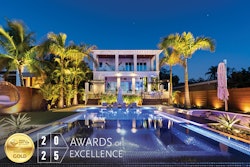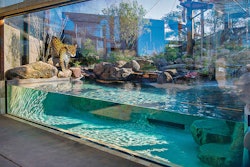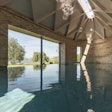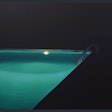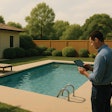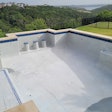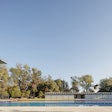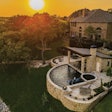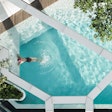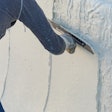APSP Speaks Out On Safety Bill.
In May, Florida congresswoman Debbie Wasserman Schultz introduced a safety bill into congress that would grant federal money to states that enacted certain safety regulations, specifically those dealing with perimeter fencing, anti-vortex drains and suction-valve release systems, or SVRS, which are designed to prevent entrapment. On May 3, a Senate subcommittee held a hearing to look into pool and spa safety and the provisions of the bill, and the APSP sent Latham International president Mark Laven to testify on the association's behalf.
Citing what they said was the bill's narrow scope, some industry insiders expressed doubt that Wasserman Schultz's bill would get much attention. But Laven's testimony that day followed two days of high-profile television appearances by Nancy Baker, whose young daughter drowned in an entrapment incident four years ago, and her daughter's grandfather, former Secretary of State James A. Baker III. Ms. Baker also testified at the hearing, her tearful and compelling testimony setting the stage for Laven's statement.
After carefully laying out the association's record on safety advocacy and its belief that the best course of action was widespread adherence to ANSI's pool and spa standards along with education targeted at pool and spa owners and parents, Laven hit on APSP's main objection to the Wasserman Schultz bill.
"Our industry is young and vibrant. New ideas for safety products and features are being developed all the time," he said. "To mandate any one device or method has the potential to create a false sense of security and to freeze one solution in place at the expense of new and better alternatives that may become available. Consumers must be allowed to benefit from safety innovation. Moreover, a safe pool environment involves many factors, in combination, and one size does not fit all when it comes to responsible pool ownership."
Alan Korn, director of public policy and general counsel for Safe Kids Worldwide and a supporter of the bill, followed Laven and returned the conversation to the entrapment issue, citing the effectiveness of the two devices he advocated and the reality that adult supervision was at times lax and inadequate.
Senator George Allen, the Virginia republican who chairs the Subcommittee on Consumer Affairs, Product Safety and Insurance, then questioned Laven about the devices and whether they were difficult — and therefore expensive — to install.
"We have no concerns about cost whatsoever," Laven said. He then reiterated APSP's support for a standard that calls for a variety of means of preventing suction drownings.
"There are currently available designs in addition to the ones that are stipulated in the bill," Laven said. Both Baker and Korn conceded that if other methods of preventing entrapment were indeed feasible, they'd support their inclusion in the bill. Korn cited performance-based standards, while Baker alluded to pools with no drains at all (see related story on p. 125).
Laven then vowed that the association would "work hard" with Baker and Korn to explore common ground and help in their shared goal of reducing suction and entrapment incidents, especially those involving children.
The hearing was held before the Subcommittee on Consumer Affairs, Product Safety and Insurance of the U.S. Senate Committee on Commerce, Science and Transportation. In addition to hearing from Allen, Baker, Korn and Laven, the panel heard testimony from committee members Mark Prior (D-Ark.) and John McCain (R-Ariz.), and Jacqueline Elder of the Consumer Product Safety Commission.
CPSC Launches Safety Initiative On Inflatable Pools.
The Consumer Product Safety Commission launched a safety initiative regarding inflatable pools on May 17. "We put out a press release along with a video news release that we broadcast to news stations across the country," says CPSC spokesman Mark Ross. "We did a press availability with our chairman at a home with an inflatable pool where he was interviewed by various media, and we're basically trying to get the word out about how we're seeing a rise in the number of deaths in inflatable pools, and the concerns that we have with the safety of young children when inflatable pools are in the yard or the vicinity."
The CPSC staff is working with other groups in the pool industry to ensure the safety of inflatable-pool users. "We had a meeting here at CPSC with ASTM International that also incorporated other consumer safety groups," says Ross. "We had the first meeting with them in June 2005, and we've had a couple of meetings since then with them, trying to address voluntary standards for inflatable pools and develop new safety standards specifically for that newer product."
Inflatable pools, which can be as large as 4,000 gallons, often fall outside of local building codes that require barriers, and the CPSC has reports of 17 drowning deaths involving inflatable pools in 2005, up from nine in 2004 and 10 in 2003.
Hot Spring Spas First To Be Recognized By The NSF.
Hot Spring Spas, Vista, Calif., is the first brand in the industry to be certified by the National Sanitation Foundation (NSF) as meeting a comprehensive set of standards evaluating the overall safety and performance of the spa.
The NSF, an independent, not-forprofit organization, founded in 1944, certifies products and develops standards to help protect food, water, air and consumer products, and is now addressing consumer interest in the safety of residential portable spas by unveiling Protocol 181 (NSF P181), the first to address certification of the entire residential spa. The protocol includes appropriate health and safety information on circulation, filtration, heating and sanitation of spa water for the homeowner, as well as materials, design and construction, and performance requirements such as water depth, safety covers and lighting requirements. There are several standards (ASTM, NSF, UL) addressing different components of the spa, but NSF P181 combines the requirement for these standards under one protocol, developed with assistance from state and federal regulators, industry and academicians.
"By combining safety and performance requirements into one protocol, NSF P181 is raising the bar in spa safety," says Keith Harbol, a chemical engineer for Watkins Manufacturing, maker of Hot Spring Spas.
HotTubLiving Web Site Relaunches
In June the Association of Pool & Spa Professionals (APSP) introduced its revamped hot tub Web site, HotTubLiving.com.
The new site also features a benefitsdriven message, "Feel Good For Life," developed by Hot Tub Council members, industry partners and New Yorkbased public relations agency Gibbs & Soell. The message hinges on three categories of hot tub use: wellness, connection and experience. "Our goal with the site is for visitors to understand just how good they'll feel with a hot tub," says Larry Giles, chairman of the Hot Tub Council.
"The new site will focus on not only selling hot tubs, but the entire backyard experience," says Mike Miller, president of Salisbury, N.C.-based Miller Davis Studios, the company that created and redesigned HotTubLiving.com. "HotTubLiving.com will better reach audiences we have yet to tap into by focusing on the benefits of ownership."
The Web site revamp is part of the Hot Tub Council's strategic planning effort that centers not only on the site, but also an aggressive consumer public relations campaign and increased lead generation for APSP member retailers and manufacturers.
Trilogy, Fluent Study Pool Drain Effectiveness.
Trilogy Pools and Fluent have released a study documenting the effects on circulation and removal of contaminants of sealing, or not installing, the main drain in residential swimming pools.
Ray Cronise, cofounder of Trilogy Pools, claims that deaths and injuries caused by suction entrapment can be completely eliminated, without any negative effects, by sealing the drains in existing pools and not building drains in new pools.
"The pool industry has long used drains because of the belief that they are required in order to provide circulation throughout the pool so that contamination will not remain in stagnant areas but will rather quickly pass through the filter where it can be removed," Cronise says.
Cronise and Dave Schowalter, a lead consulting engineer with Fluent, a developer of computational fluid dynamics (CFD) software, simulated the flow of water through computer models of swimming pools. The simulation involved placing contaminants in various areas of the pool and tracking the amount of time needed to remove them using the pool's circulation system both with and without drains. CFD software enables engineers to model the flow of either liquid or gas (or both) within a defined area and determine the impact of inflows, outflows, obstructions, boundaries and a wide range of other factors. The model was 15 feet wide, 35 feet long, 6 feet deep at one end and 3 feet deep at the other end, with four inlets arranged around its circumference to provide circulation and a skimmer at the waterline. One of the pools had two main drains, while the other had none. The pools were circulated at the rate of approximately 60 gallons per minute.
The simulation showed that the contaminant concentration was actually higher at most of the monitoring points in the pool with a drain during the first 1,000 seconds of the simulation, but at about the 1,000second point, the contamination in the pool with a drain dropped to the level of the pool without a drain and the two pools showed essentially identical results from that point on, according to the companies. The simulation also showed that inlets and skimmers alone were sufficient to clear contamination to levels of about 0.0015 ppm within about 1,000 seconds. After that point, the circulation system continued to reduce the level of contamination to about 0.001 after 6,000 seconds, say the companies.
Softub Meets CEC Energy Efficiency Regulations.
Softub announced in May that all portable spa models currently manufactured by the company had been tested and had met the Appliance Efficiency Regulations as set forth by the California Energy Commission (CEC).
California has adopted energy-efficiency guidelines for hot tubs, and all hot tubs sold there must meet a baseline energy usage level. The Appliance Efficiency Regulations were originally established in 1976 in response to a legislative mandate to reduce California's energy consumption, and are updated periodically to allow consideration and incorporation of new energy efficiency technologies and methods.
Color Kinetics And Super Vision Still In Court.
In May the U. S. District Court for the District of Massachusetts awarded Color Kinetics its costs and attorneys' fees in a patent lawsuit against Super Vision International, pending documentation of the costs and fees, which Color Kinetics estimates to be approximately $1.4 million. With the reimbursement for attorneys' costs and fees, Color Kinetics agreed to waive willful infringement and all rights to damages related to its patents in its infringement case against Super Vision, according to Color Kinetics. Super Vision says it will contest this order, and the estimated $1.4 million legal costs will be appealed in conjunction with the overall appeal of the infringement summary judgment.
The decision followed a ruling in August 2005, when the court granted all of Color Kinetics' motions for summary judgment against Super Vision relating to five disputed patents. The court found that all five of Color Kinetics' asserted patents were valid, that each of five Super Vision product lines infringed those patents and that Color Kinetics did not engage in misconduct before the U.S. Patent and Trademark Office. The court had earlier granted summary judgment in favor of Color Kinetics on tort claims raised by Super Vision.
In a separate proceeding in April, Super Vision filed suit against Color Kinetics. The infringement lawsuit was filed in the U.S. District Court for the Eastern District of Texas, and is seeking past due royalties and damages for past and current infringement violations of Super Vision's U.S. patent No. 4,962,687 for variable-color lighting systems.
BUSINESS BRIEFS• The U.S. Consumer Product Safety Commission (CPSC), in cooperation with Aqua-Leisure Industries , has recalled about 320,000 Simple-Set Pool Ladders for safety reasons. The plastic step support clips can be assembled upside down, causing the steps to break under a user's weight. Aqua-Leisure and the CPSC are aware of nine incidents thus far this year, with six reported injuries, including a broken arm, concussion, fractured ribs and a wrist sprain. The ladders were included with Aqua-Leisure's Simple-Set inflatable pools, ranging from 12 to 18 feet in diameter, which were sold at discount and toy stores nationwide from January 2002 through August 2005.
• After a successful SPATEX 06, organizers for the Brighton, U.K., show say exhibitors are booking early for 2007 and that 66 percent of available floor space has been contracted. SPATEX 07 will take place from Feb. 4-6, 2007, at the Hilton Brighton Metropole Exhibition Centre.
• Tom Thornbury, chairman and founder of Softub , presented a retrospective look at the company's 20-year history during the company's annual dealer meeting last March in Las Vegas.
• Inter-Fab , a manufacturer of pool deck accessories, has announced plans to expand its manufacturing and warehousing facilities to Memphis, Tenn. President Mike Hagerty says the company has contracted to purchase an existing factory facility of over 91,000 square feet.
• Carter Grandle recently announced the expansion and relocation of its permanent space in the Chicago Merchandise Mart. The company will unveil its new showroom, in suite 1757, in time for the SCFMA's Pre-Market Event, July 1013, 2006. The new space will approximately double the size of Carter Grandle's previous showroom.
• Sunlight Saunas , Lenexa, Kan., was recently named to Entrepreneur Magazine 's HOT 100 list of the fastest-growing companies in the United States. Sunlight was also recognized as Kansas City's Fastest Growing Company for 2005.


























